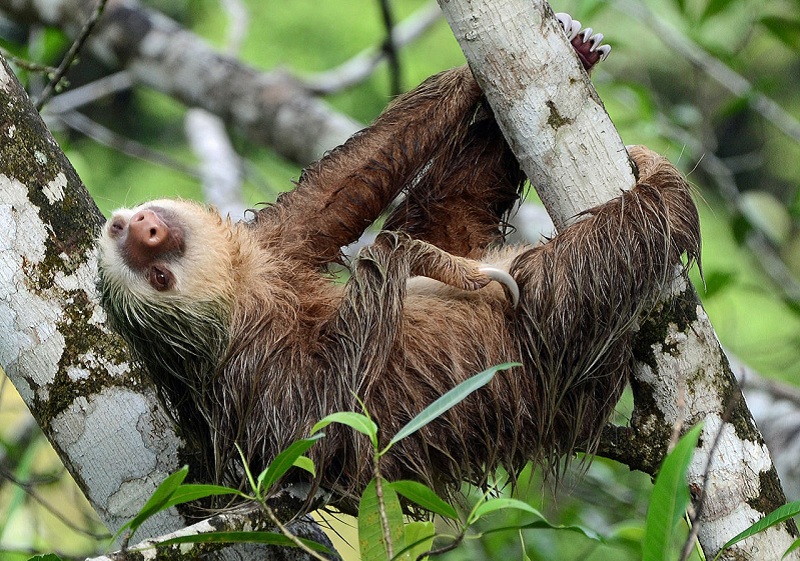 |
| ▲ Sloth is an excellent swimmer (source = Wikipedia) |
Recently, a two-toed sloth has gained popularity as an exotic pets. Nevertheless, these animals are rarely found in pet trading. It is not suitable for pets for various reasons. In addition, the sloth needs special care and needs to be aware of various legal considerations before adoption.
What is Sloth?
Two toe sloths give birth to only one baby during pregnancy for 6 to 12 months. And the cubs are sexual maturity at the age of three.
Sloths can not walk on the ground, but their swimming ability is excellent. And I like to ride on the tree as a very gentle and slow moving creature. In the wild, sloths known as herbivores eat berries, flowers, small branches, and animal proteins. The weight is about 12 to 19 pounds, but the weight varies according to the bowel movement cycle. Sloth excreta account for up to 40% of body weight. The sloth evolved to do everything in an inverted state. And symbiotic birds are parasitized on the hair of the sloth and eat nutrient.
How to manage pet sloth
1. Cage
The cage should be decorated similarly to the very hot and humid environment of Central and South America, the habitat of the sloth. In addition to installing objects that can hang in a small room, a radiator and a humidifier must be installed to reproduce the tropical atmosphere. This extremely sensitive organism must live in a place where it can meet its own needs. Therefore, we need a large-scale large-scale building about 8 feet high. And we have to install a lot of hanging equipment such as branches and ropes. Certainly there can be significant costs. Moreover, these cages are not sold in regular pet shops. And the sloth needs a large space for collecting activity in an unsealed space. Also, whatever we choose for sloths, we must maintain the proper temperature. When a sloth is to live in an extremely cold place for a long time, the body temperature is lowered and the digestive system does not function.
2. Feed
Wild sloth is the food and vegetables, leaves, branches, and fruits. And they eat insects for nutrients. Sloths are very difficult to feed because they eat special vegetables and foods that can only be found in the wild. Feeding sloths is something that can not easily be bought at a grocery store. People eat vegetables that do not contain enough dietary fiber to function properly. Breeding sloths usually feed on primates. At the zoo or rescue group, the sloth is fed with fruit salad, vegetables, yogurt, and dog food.
Water should be readily available in several places to make it easy to eat. You should also have a swimming pool where you can swim.
3. Veterinary care
You should consider whether you can get a professional veterinarian before adopting a sloth. Because sloths are exotic animals, it is very difficult to get veterinary care. And if you go on vacation or business trips, you should also think about people who can take temporary care.
Although the number of veterinarians specializing in exotic animals is increasing, it is very unlikely that they will be able to seek a veterinarian who can treat the sloth. A veterinarian who can handle this extremely special animal is an authorized person who can manage zoo animals and wildlife.
For example, these veterinarians survey large quantities of excrement samples each year to detect parasite infections. Even zoo veterinarians have no practical experience with this particular animal. Sloths are complex and susceptible to many problems with sensitive fields. And if you go away from home, you will be stressed and affect your mortality rate. But if you manage it properly, you can live for up to 30 years.
Legal considerations
There are several rules for exotic animal ownership. Some states in the United States prohibit owning exotic animals entirely, while others require permits or licenses. To confirm this problem, you should contact the local authority and ask for the necessary information.
Sloths are not recommended as pets due to special feeding and environmental requirements. People who know that it is difficult to raise sloths, but there is still a demand for sloths.
![[Pets] Making a living room with a pet? pets making a living room with a pet](https://moontore.com/wp-content/uploads/2019/02/pets-making-a-living-room-with-a-pet-1200x700.jpg)


